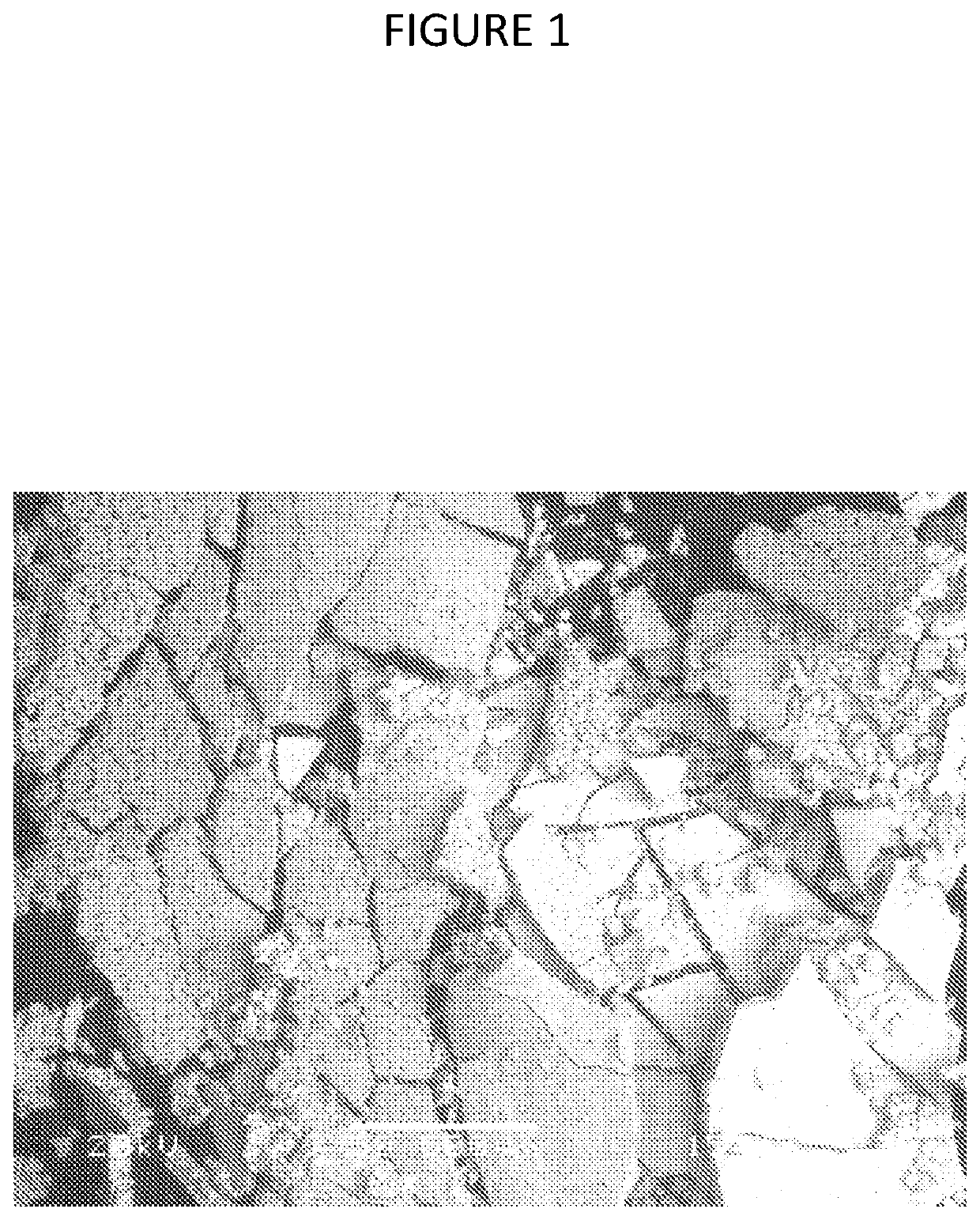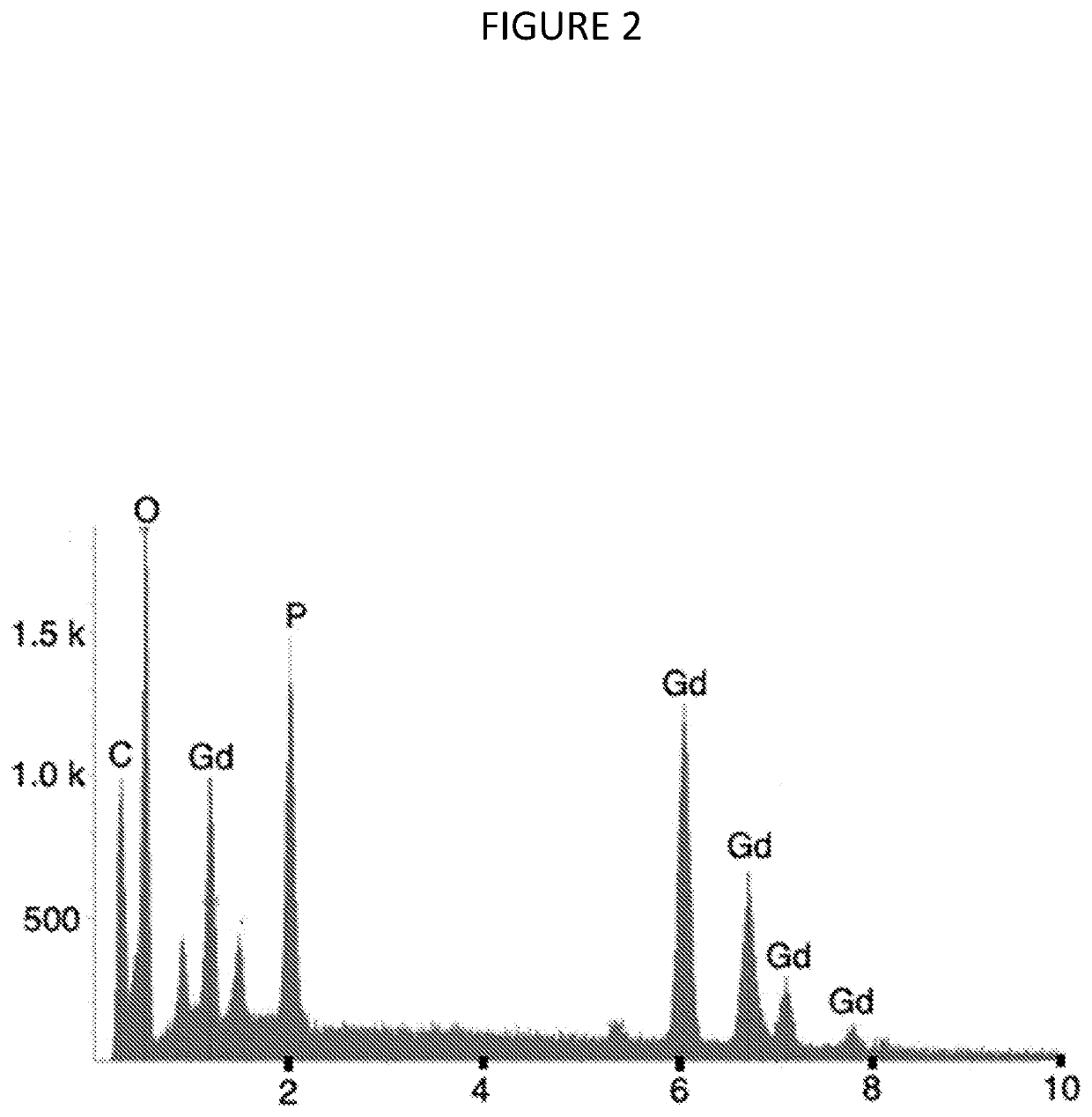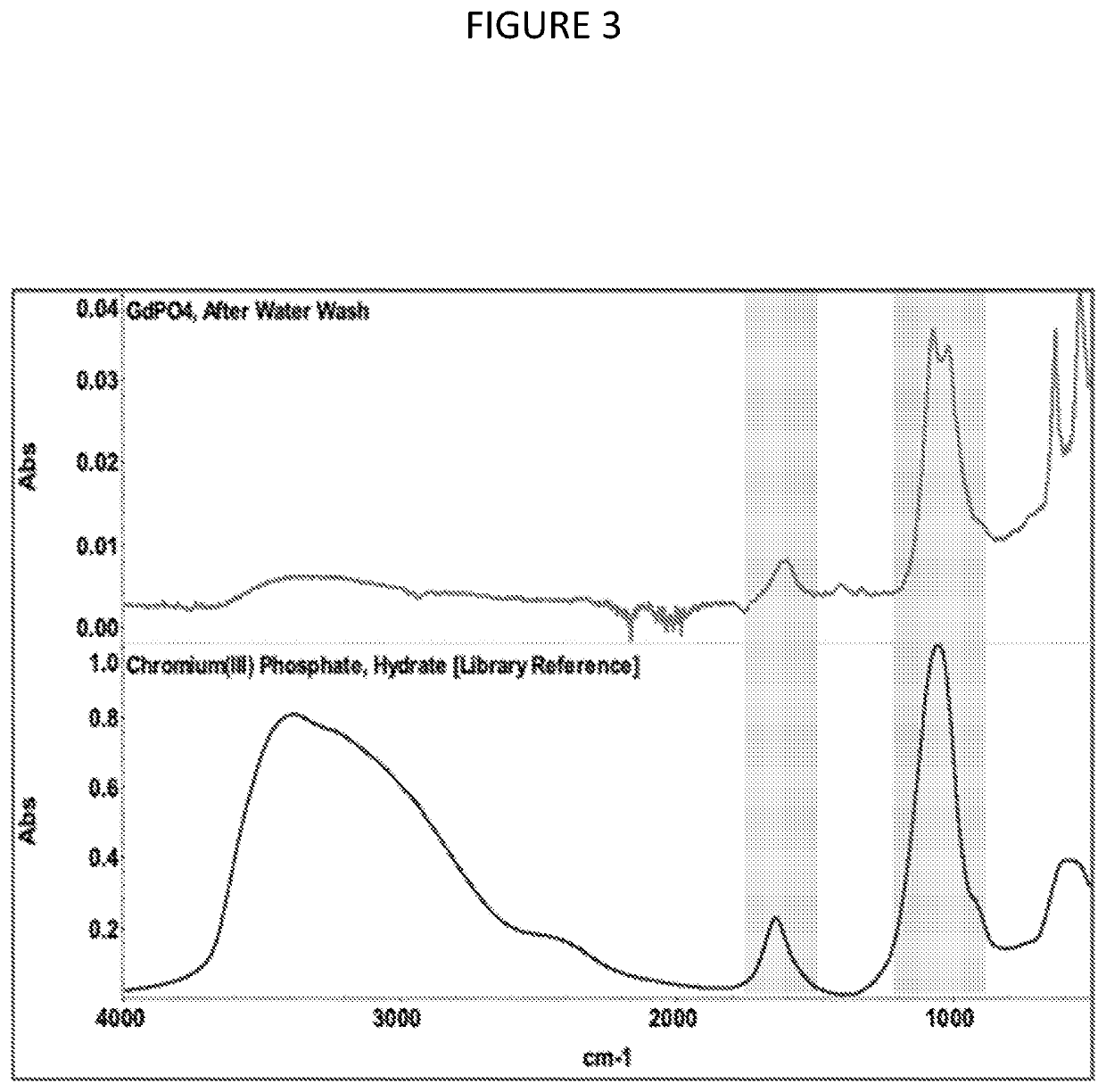Composition and method or recovering rare-earth elements
a rare-earth metal and reclaim technology, applied in the direction of process efficiency improvement, etc., can solve the problems of environmental waste problems, loss of valuable products, increased costs and problems associated with biological and chemical waste disposal
- Summary
- Abstract
- Description
- Claims
- Application Information
AI Technical Summary
Benefits of technology
Problems solved by technology
Method used
Image
Examples
example 1
ipitation
[0062]1 mmol / mL gadobutrol samples were combined with concentrated phosphoric acid until reaching a pH of 0. At 72 hours at room temperature after the addition of the phosphoric acid, white GdPO4 precipitate was observed at the bottom of the sample vial. The GdPO4 was isolated by filtration or decanting, and the gravimetric crude yield of the gadolinium was calculated to be 45% (mol) relative to starting material.
[0063]The gadolinium-containing precipitate was subjected to scanning electron microscopy / energy dispersive spectroscopy (SEM / EDS) to confirm that the precipitate contained gadolinium, phosphorous, and oxygen, consistent with GdPO4. FIGS. 1 and 2 depict the scanning electron macrograph and the energy dispersive spectrogram, respectively.
[0064]The precipitate was also subjected to Fourier transform infrared analysis (FTIR) to confirm that it was pure inorganic GdPO4. FIG. 3 depicts the FTIR spectrograms of precipitate (GdPO4) (top panel) and CrPQ4(H2O)n (bottom pane...
example 2
lt Extraction
[0065]Concentrated sodium iodide was added to I mmol / mL gadobutrol and adjusted to about pH 0 with hydrochloric acid. The solution turned yellow due to formation of GdI3 At about 72 hours at room temperature, brown crystals were observed at the bottom of the vial. Yield was low (<20% (mol) or a few milligrams GdI3 isolated from 10 mL gadobutrol).
[0066]The precipitate was analyzed by SEM / EDS and confirmed to contain gadolinium and iodine (FIGS. 4 and 5).
[0067]The GdI3-containing precipitate was washed and subjected to FTIR (top panel of FIG. 6) and compared to the FTIR profile of cobalt (II)-EDTA complex (bottom panel of FIG. 6), which is a close representative standard of a similar organic ligand-metal complex. According to the FTIR analysis, it was observed that the GdI3-containing precipitate contained peaks associated with the gadobutrol organic chelator.
example 3
lt Extraction and Solvent Precipitation
[0068]Acidified sodium iodide / gadobutrol solution prepared as in Example 2 was added dropwise into acetone. An abundance of precipitate was formed.
[0069]Analysis by SEM / EDS confirmed that the precipitate contained both gadolinium and iodine, but with large quantities of carbon and sodium as shown in FIGS. 7 and 8, indicating the mixed nature of the precipitate.
PUM
| Property | Measurement | Unit |
|---|---|---|
| pH | aaaaa | aaaaa |
| volume | aaaaa | aaaaa |
| pH | aaaaa | aaaaa |
Abstract
Description
Claims
Application Information
 Login to View More
Login to View More - Generate Ideas
- Intellectual Property
- Life Sciences
- Materials
- Tech Scout
- Unparalleled Data Quality
- Higher Quality Content
- 60% Fewer Hallucinations
Browse by: Latest US Patents, China's latest patents, Technical Efficacy Thesaurus, Application Domain, Technology Topic, Popular Technical Reports.
© 2025 PatSnap. All rights reserved.Legal|Privacy policy|Modern Slavery Act Transparency Statement|Sitemap|About US| Contact US: help@patsnap.com



